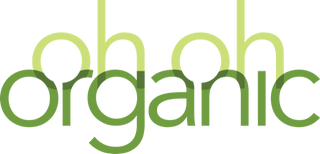Transition to Transparency

Defining Transparency
Personal care consumers want transparency, safety and sustainability, but what does that mean in terms of all the current claims being used?
Clean, Green, Sustainable, Non-Toxic, and Conscious, are just some of the terms used to sell personal care products today. Retailers, however, all define these words differently, creating confusion in the marketplace. Because this is not good for building a strong market, our industry would be well served to harmonize the meanings of these various label claims.
But before we jump into the challenge of clarifying consumer expectations for cosmetics, the history of how the organic food standard came into being may help build a base for a future path to clarify “clean”, “green”, “sustainable”, and even “conscious” cosmetics.
History
In 1990 the Federal government passed the Organic Foods Production Act. By the mid 90s there were about 46 different organic standards and their certifiers. To complicate things even more, natural grocery retailers set their own standards, further challenging brands and producers. This meant consumers were confused and the word “organic” was not well trusted.
In the late 90s the Organic Trade Association (OTA) pushed for a harmonized standard, with the final regulation being published in 2001 and implemented in October of 2002. Now the word “organic” was based on a clear law that made it credible, and the USDA Organic seal was born.
Today’s Confusion
Similar to the organic “rules” of the 90s, we face consumer and brand confusion with “clean”, “green”, “sustainable”, and even “conscious” cosmetics. Every retailer has their own rules, some are clearer than others, some are just lists of prohibited ingredients, some are “proprietary” secrets, some are actual rigorous standards, and some are just lame.
Solutions
Can retailers solve this problem? The short answer is yes – if they want to. They need to share definitions and adopt common principles and vocabulary. Assuming that none of us want to add another layer of regulation, what tools already exist that can help the industry clarify these terms and better serve the consumer?
- “Green Chemistry” is defined in an internationally accepted publication, Green Chemistry: Theory and Practice<1>. This is perhaps the most vibrant area of new molecule development today and provides a clear path to describing “safer chemicals”. “Green Chemicals” are much safer chemicals, both topically and environmentally.
- Certification – COSMOS<2>, NaTrue<3>, ANSI/NSF-305<4>, and the USDA- NOP are all published standards that provide a clear definition of both topically and environmentally safe cosmetics. These standards verify derivation and can help with “transparency”. Certifications are only as good as the transparency the Standard provides to all stakeholders.
- Definitions: Regulations in the US, certain individual states, and the EU provide some guidance via the organic regulations, the definition of “naturally occurring substances” (40 CFR 710.4(b)) and other terms like biodegradable, gluten-free, and bio-based. The Green Guides from the FTC may also help.
- Ingredient assessment websites: NOVIConnect.com (an ingredient screening service), the Skin Deep Database, Scivera LLC (toxicology service), etc. could support retailers once they define their terms. Some of these sites strictly look at “safety”, others verify every claim, from no animal testing to gluten free to no petro-chemicals.
- Packaging assessments: packaging is the current biggest challenge any of us have. It is pretty clear that plastic is a worldwide problem. Collective action could help solve this.
An ongoing challenge will be to define “Sustainable”. This word is broadly understood to mean that all of the parts used in any production system are renewable and not destructive downstream. Sadly, most of the larger brands use it to address energy consumption and packaging – and even then their packaging is still not biodegradable and going into landfill.
A more beneficial approach for a Sustainability Program is to stop creating an artificial end point: a sustainability program should be based on on-going improvement and adding areas of focus. This could lead to automatically expecting more of ourselves and working on continuous improvement.
Until retailers can clearly articulate a harmonized set of criteria and truthful statements to describe the ultimate concerns of consumers, the market will continue to be somewhat confused, fragmented and even distrusted. Personally, I’d like to see this market thrive so distrust is never going to help.
In this day of Zooming and other meeting platforms, it is inexcusable that we can’t all sit down together and work toward solutions. Retailers: the ball is in your court.
<1> Warner and Anasas – 1998
<2> COSMOS web site
<3> NaTrue web site
<4> Tilth website







